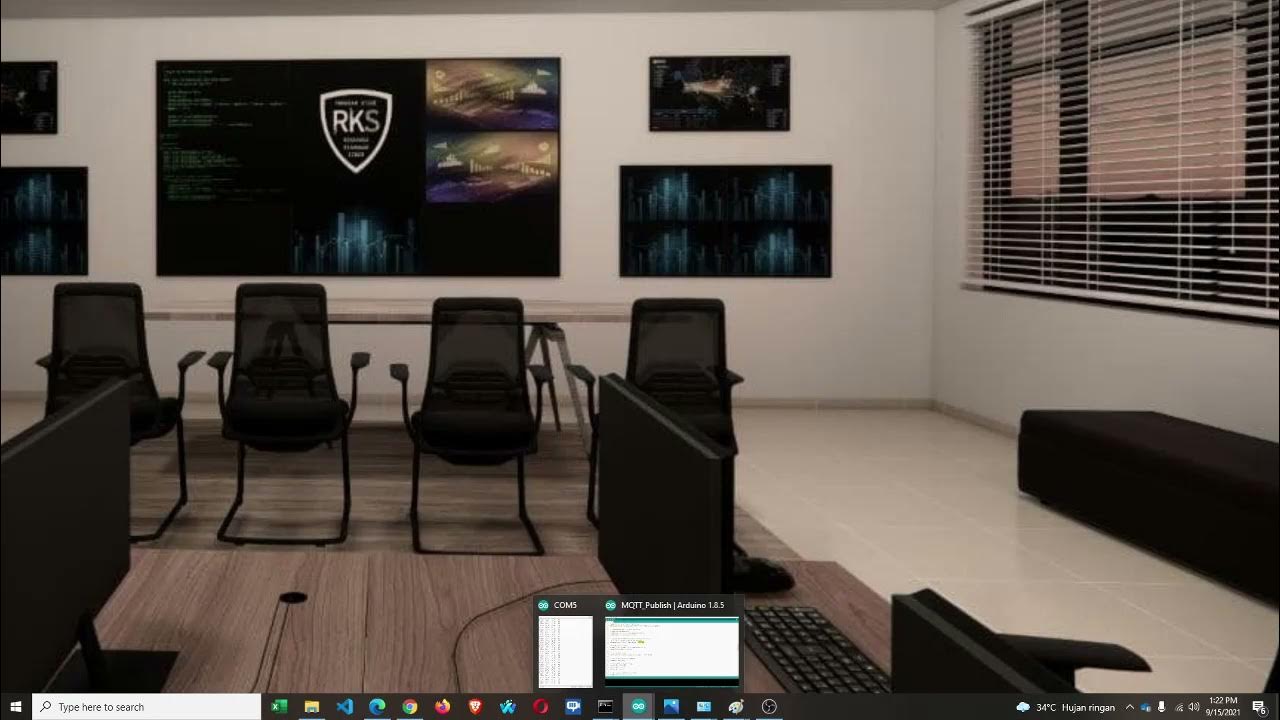Smart Wireless IoT-Enabled Food Spoilage Detection Using Arduino with Sensor's and ESP8266 ( Wi-Fi )
Summary
TLDRThis project demonstrates an IoT-based food spoilage detection system using sensors like DHT11 for temperature and humidity, MQ4 for methane gas, and a moisture sensor, all integrated with an Arduino Uno R3 and ESP8266 Wi-Fi module. The system monitors various environmental factors affecting food spoilage, sending real-time alerts via email and SMS. It tracks temperature, humidity, methane gas levels, and moisture, updating the data to a server every 20 counts. The setup includes alarms, LEDs, and a mobile hotspot for remote monitoring, ensuring efficient food spoilage detection and alerting.
Takeaways
- 😀 The project focuses on IoT-based food spoilage detection using multiple sensors, including DHT11 (temperature and humidity), MQ4 (methane gas), and a moisture sensor.
- 😀 The system uses an Arduino Uno R3 board connected to an ESP8266 Wi-Fi module for data transmission.
- 😀 A 5V power supply module, regulated from 9V, powers the entire setup, with an additional adapter providing necessary voltage adjustments.
- 😀 The DHT11 sensor is connected to pin A2, the MQ4 methane gas sensor to A0, and the moisture sensor to A1 on the Arduino board.
- 😀 The system features an LCD display (16x2) that shows sensor values and status, using pins 8-13 for communication.
- 😀 A red LED and green LED are used for visual alerts related to food spoilage conditions.
- 😀 The system continuously monitors temperature, humidity, methane gas levels, and soil moisture, with values updated every 20 counts on the server.
- 😀 The ESP8266 module requires a mobile hotspot with internet access for communication, with specific SSID and password configurations.
- 😀 Alerts (email and SMS) are triggered when food spoilage conditions such as high methane gas, excessive temperature, or humidity are detected.
- 😀 The system demonstrates real-time updates to the server and also triggers alarm signals like a red LED or buzzer when spoilage is detected.
- 😀 The project includes both mobile and server-side communication, with data sent from the sensors to the server using mobile data and the Wi-Fi module.
Q & A
What sensors are used in the IoT-based food spoilage detection system?
-The system uses the DHT11 temperature and humidity sensor, MQ4 methane gas sensor, and a soil moisture sensor to detect food spoilage.
What role does the Arduino Uno R3 play in the project?
-The Arduino Uno R3 serves as the central controller, receiving input from the sensors and managing the operation of other components like the LCD, LEDs, and Wi-Fi module.
How is the system powered?
-The system is powered by a 0-9V adapter that is converted to 5V using a rectifier, filter capacitor, and a 7805 voltage regulator to provide stable power to the Arduino and sensors.
What is the purpose of the ESP8266 Wi-Fi module in this system?
-The ESP8266 Wi-Fi module connects the system to a mobile hotspot, enabling the transmission of sensor data to a remote server and allowing the system to send email alerts.
How does the system alert users about food spoilage?
-The system sends email alerts when conditions like high temperature, humidity, or the presence of methane gas (indicating spoilage) are detected.
What kind of data is sent to the server by the system?
-The system sends data about temperature, humidity, methane gas levels, and moisture values to the server. The data is updated every 20 counts and includes the date and time of measurement.
How does the system detect methane gas and respond to it?
-The MQ4 methane gas sensor detects methane gas levels, and if the detected value exceeds a threshold (200 or above), it triggers an alarm and turns on a red LED, indicating food spoilage.
What happens when the temperature exceeds a set limit in the system?
-If the temperature rises above a certain threshold (e.g., 40°C), the system sends a data update to the server and triggers an email alert indicating an over-temperature condition.
How does the system handle high humidity levels?
-When the humidity level exceeds 70%, the system sends data updates to the server, and an alarm is triggered. If the humidity returns to a normal range, the system continues to monitor and send data.
What is the function of the LCD display in the system?
-The LCD display shows real-time readings of the sensor values, including temperature, humidity, methane gas levels, and moisture values. It also displays the status of the system (e.g., Wi-Fi connection).
Outlines

Dieser Bereich ist nur für Premium-Benutzer verfügbar. Bitte führen Sie ein Upgrade durch, um auf diesen Abschnitt zuzugreifen.
Upgrade durchführenMindmap

Dieser Bereich ist nur für Premium-Benutzer verfügbar. Bitte führen Sie ein Upgrade durch, um auf diesen Abschnitt zuzugreifen.
Upgrade durchführenKeywords

Dieser Bereich ist nur für Premium-Benutzer verfügbar. Bitte führen Sie ein Upgrade durch, um auf diesen Abschnitt zuzugreifen.
Upgrade durchführenHighlights

Dieser Bereich ist nur für Premium-Benutzer verfügbar. Bitte führen Sie ein Upgrade durch, um auf diesen Abschnitt zuzugreifen.
Upgrade durchführenTranscripts

Dieser Bereich ist nur für Premium-Benutzer verfügbar. Bitte führen Sie ein Upgrade durch, um auf diesen Abschnitt zuzugreifen.
Upgrade durchführenWeitere ähnliche Videos ansehen

New Blynk IOT Smart Plant Monitoring System

Alat Pendeteksi Suhu, Kelembaban, dan pH Tanah Berbasis Arduino Uno-Proyek Mandiri

Sending Temperature and Humidity Sensor Data (DHT11) to Firebase using ESP32

IoT Monitoring Kelembaban Tanah & Temperatur Udara Penyiram Tanaman Otomatis Smart Garden BLYNK

IoT based Battery monitoring and controlling system for EV

Lab 6 - Node Sensor Publisher, Broker dan Subscriber
5.0 / 5 (0 votes)
